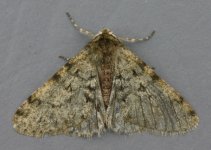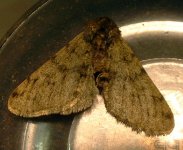Pete Haynes
Pete H
Perfect conditions last night produced 50 moths of 14 species, including an early Pale Brindled Beauty, pictured. The December Moths were going berserk with two very large females and 13 males in the trap. Others caught were Yellow-line Quaker (9), Chestnut (5), Mottled Umber (4), Winter Moth (3), November Moth agg (3), Feathered Thorn (3), Scarce Umber (2), Red-green Carpet (1), Satellite (1), Sprawler (1), Acleris notana/ferrugana (1) and Acleris sparsana (1) + a couple of really worn out unidentifiable specimens.





